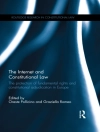All humans eventually die, but life expectancies differ over time and among different demographic groups. Teasing out the various causes and correlates of death is a challenge, and it is one we take on in this book. A look at the data on mortality is both interesting and suggestive of some possible relationships. In 1900 life expectancies at birth were 46. 3 and 48. 3 years for men and women respectively, a gender differential of a bit less than 5 percent. Life expectancies for whites then were about 0. 3 years longer than that of the whole population, but life expectancies for blacks were only about 33 years for men and women. At age 65, the remaining life expectancies were about 12 and 11 years for whites and blacks respectively. Fifty years later, life expectancies at birth had grown to 66 and 71 years for males and females respectively. The percentage differential between the sexes was now almost up to 10 percent. The life expectancies of whites were about one year longer than that for the entire population. The big change was for blacks, whose life expectancy had grown to over 60 years with black females living about 5 percent longer than their male counterparts. At age 65 the remaining expected life had increased about two years with much larger percentage gains for blacks.
Jere R. Behrman & Robin C. Sickles
Causes, Correlates and Consequences of Death Among Older Adults [PDF ebook]
Some Methodological Approaches and Substantive Analyses
Causes, Correlates and Consequences of Death Among Older Adults [PDF ebook]
Some Methodological Approaches and Substantive Analyses
Koop dit e-boek en ontvang er nog 1 GRATIS!
Taal Engels ● Formaat PDF ● ISBN 9789401143936 ● Uitgeverij Springer Netherlands ● Gepubliceerd 2012 ● Downloadbare 3 keer ● Valuta EUR ● ID 4726710 ● Kopieerbeveiliging Adobe DRM
Vereist een DRM-compatibele e-boeklezer












